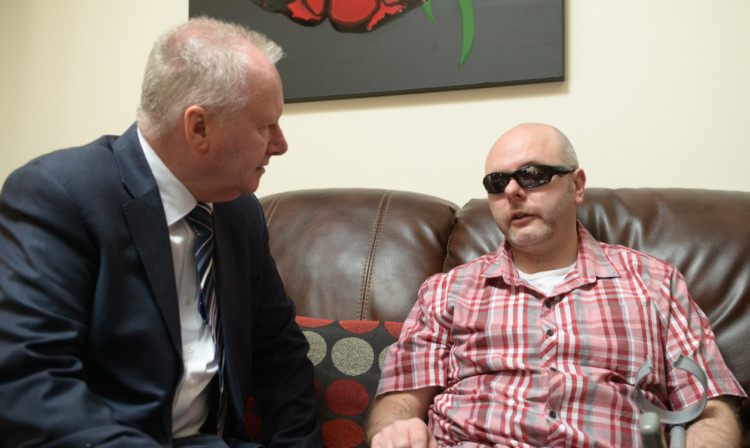Scotland’s health secretary has pledged to improve diagnosis and treatment of rare diseases in Scotland following a personal meeting with an Angus man living with a rare, terminal condition.
Alex Neil set out a three-point plan aimed at increasing awareness and raising standards of treatment of rare diseases after meeting Arbroath father of two Keith Swankie, who suffers from Progressive Supranuclear Palsy (PSP).
Keith has been living with PSP, a terminal disease which gradually robs the sufferer of mobility, speech and body control, for two years but bore the symptoms for three years before diagnosis and has been campaigning for greater awareness and treatment.
His fight landed at the feet of Mr Neil following extensive coverage of PSP in The Courier, and he made a visit to the Angus town to meet Keith and discuss the issue.
Mr Neil told The Courier: “It was nice to meet Keith. He is a very nice man but I feel very sorry for him because he had three years between having the initial symptoms of the disease and getting diagnosis.
“This is a general problem with the 6,000 rare diseases that we have. Very often, because GPs and doctors see so few cases, they don’t always quickly diagnose correctly what the disease is.”
He continued: “There are three priorities for us. The first is earlier diagnosis.
“Second is to work with the scientists and the life science industry to find a cure for PSP, because it is a very debilitating, terminal disease and the quicker we get a cure the better.
“I wouldn’t want to set expectations because the chances of getting a cure in the short-term are very slim but there is worldwide research going on into this disease and certainly we will do whatever we can to support the research.
“The third priority is to make sure that people afflicted by this disease get the health and social care that they need, from diagnosis onwards.”
Keith said Mr Neil’s visit and pledge would be of great benefit and comfort to people suffering from PSP, adding: “It’s something that was not on his radar as much as what it should have been but it is now and for the PSP Association that’s brilliant.
“It is what we have been campaigning for. He said he will give us an update, which gives me something to measure the progress of things and we will keep going.”
